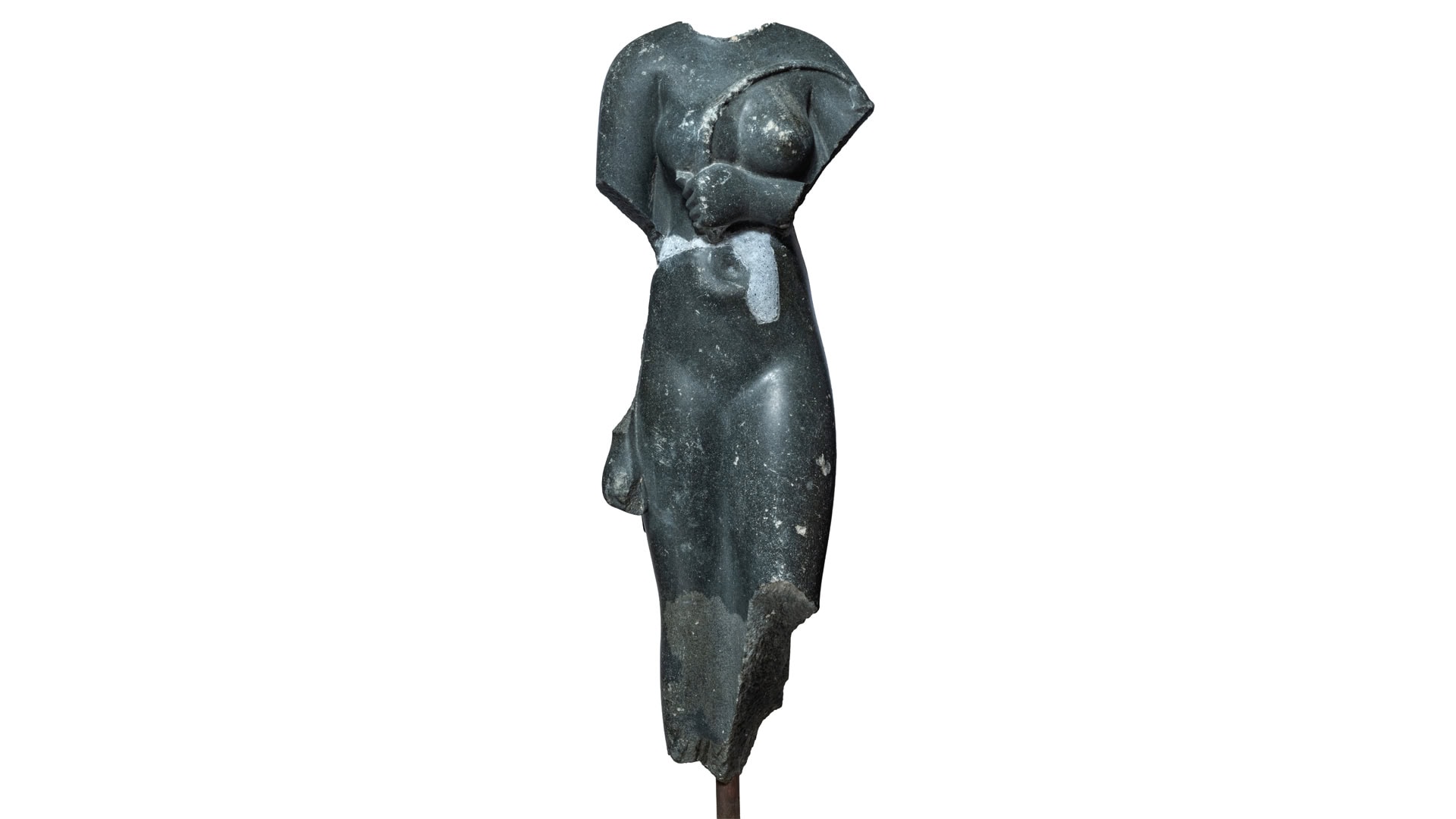Stone statuette with hieroglyphic inscription for the female musician Nesnephthys

An emblematic work that introduces visitors to this unit could be no other than the stone statuette of a female traveller of the 3rd century BC, having arrived on Delos from exotic Egypt. On the statuette’s obverse, viewers encounter a hieroglyphic inscription arranged in three columns that elucidates the woman’s identity:
In the text, the woman introduces herself as Nesnephthys unveiling her capacity: she is a “beautiful sistrum player”. The daughter of Tahenet and a high official, she was born in an ancient Egyptian city in the western Nile Delta, called Sais. She continues by urging mortals —priests and worshippers— that enter the temple, where she herself had dedicated her statuette, to pay tribute to her. Then, she encourages them to pray with her for the smooth transition to the Duat, namely the realm of the dead. The significance attached to the Afterlife by the musician is reinforced by the presence of a schematized lotus flower which she holds in her left hand, a plant that in Egyptian mythology symbolizes eternal life.
Nesnephthys, a female migrant, carved out of the dark green rock of Egypt and consecrated in some temple of Sais, arrived on the Cyclades from her far-flung homeland. Her final destination was Delos and the Sanctuary of the Egyptian Gods, leaving her mark on the coexistence of foreign and local traditional religions in a society that was changing. It seems that the statuette had been dedicated to the temple of Isis on Delos.

